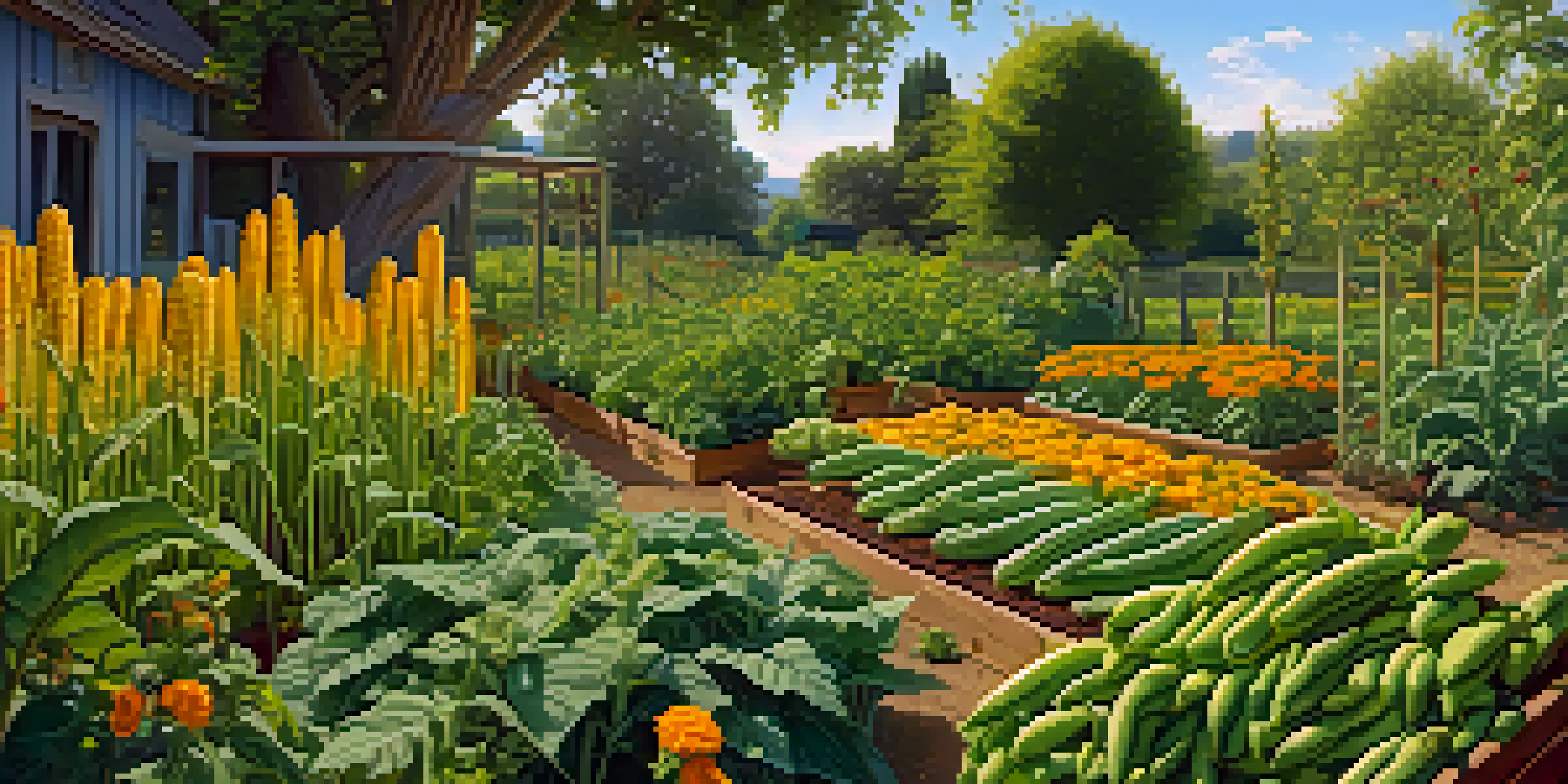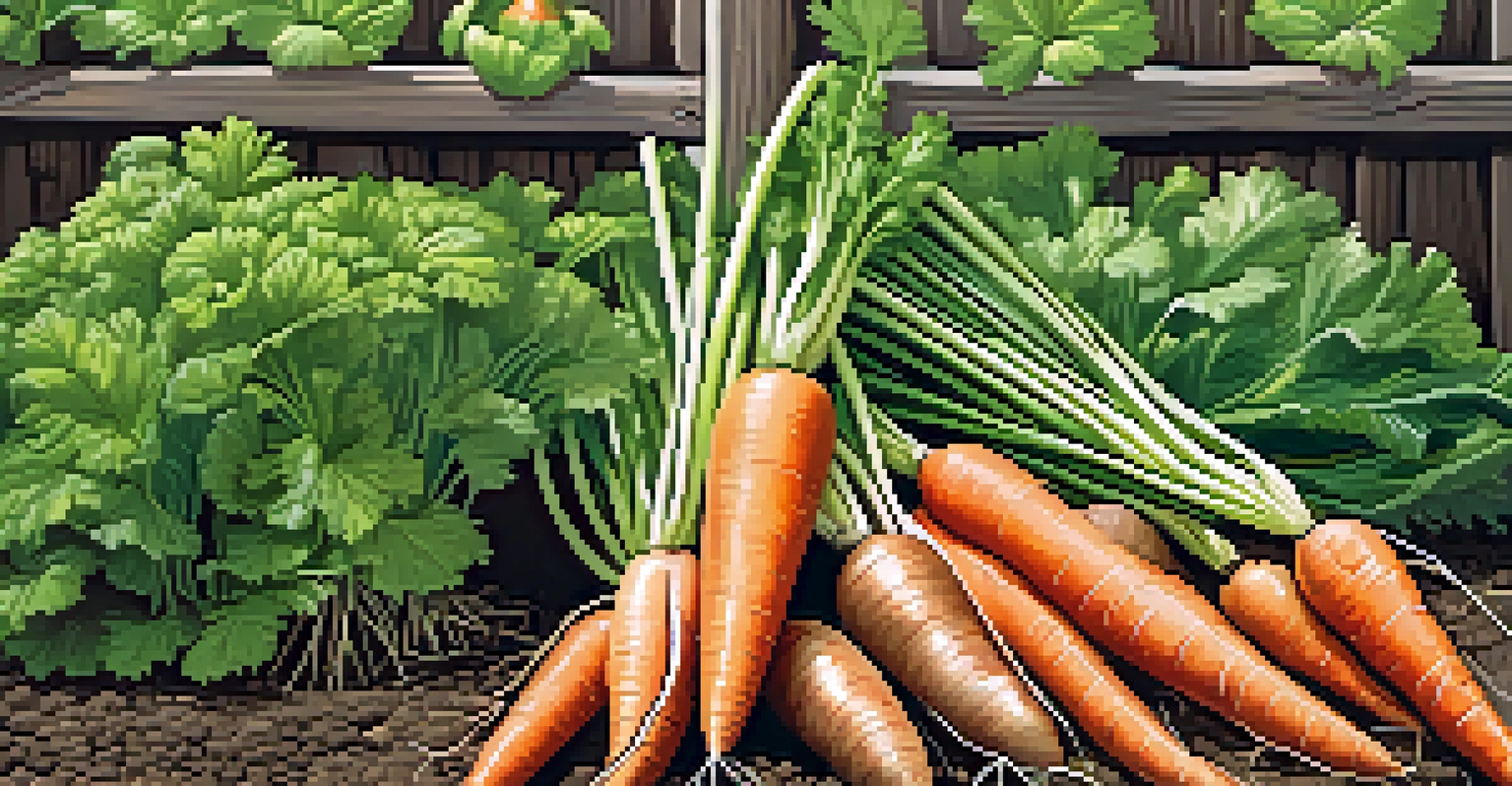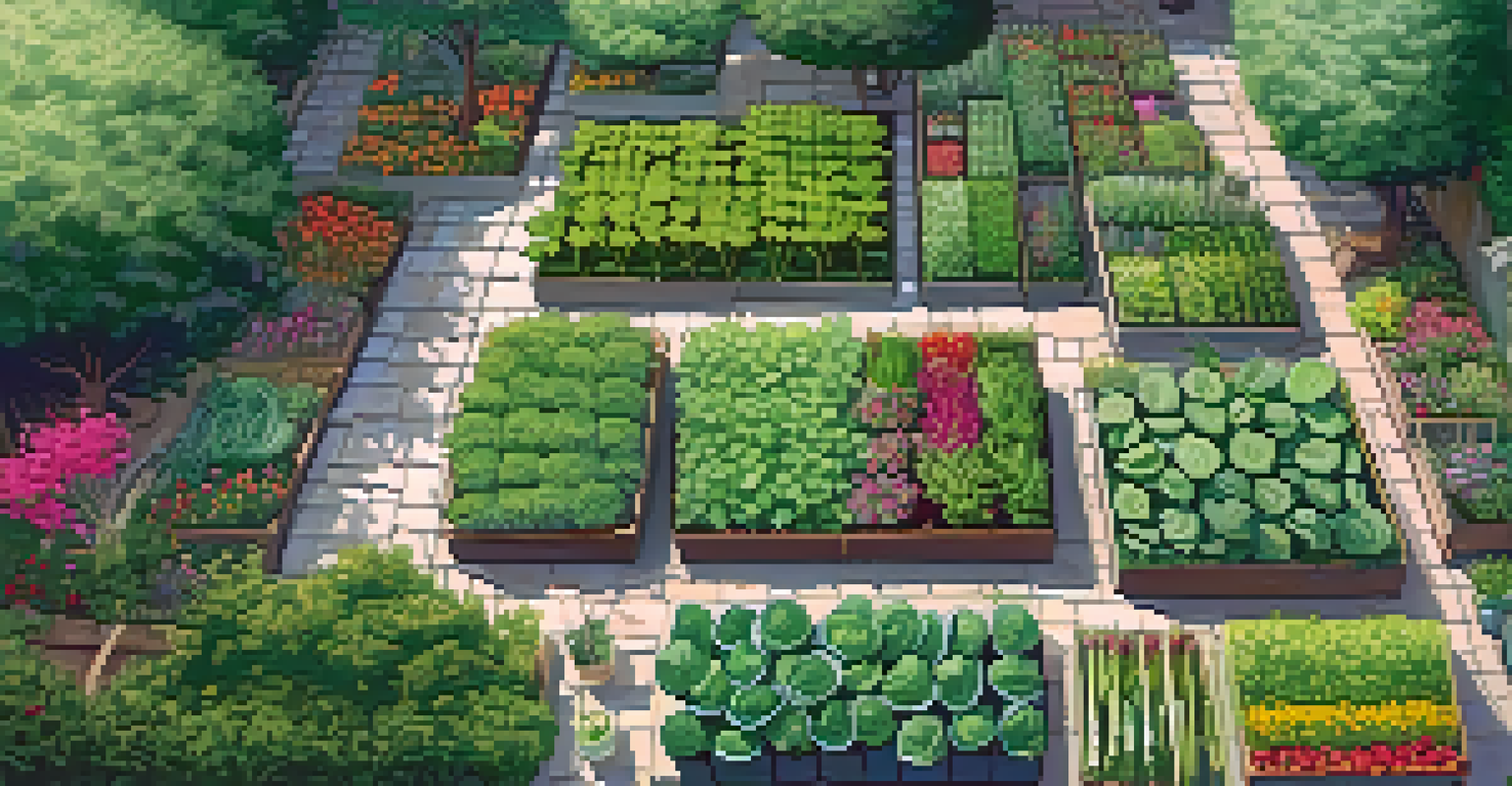Companion Planting: Enhancing Permaculture Yields

What is Companion Planting in Permaculture?
Companion planting is a gardening technique where different plants are grown together for mutual benefits. This practice is rooted in the idea that certain plants can enhance each other's growth, deter pests, or improve soil health. In a permaculture system, which aims for sustainability and efficiency, companion planting plays a crucial role.
The garden is a mirror of the soul. It reflects the way we live and the choices we make.
For example, planting basil next to tomatoes not only enhances the flavor of the tomatoes but also helps repel pests like aphids. By understanding the relationships between different plant species, gardeners can create a more productive and harmonious garden ecosystem. This method aligns perfectly with the principles of permaculture, which focus on working with nature rather than against it.
By incorporating companion planting into your permaculture design, you're not just growing food; you're fostering a diverse environment that supports various life forms. This holistic approach can lead to healthier plants, higher yields, and a more resilient garden overall.
Benefits of Companion Planting for Yields
One of the primary benefits of companion planting is the potential for increased yields. By strategically pairing plants, gardeners can maximize space and resources, leading to a more productive garden. For instance, corn, beans, and squash, known as the 'Three Sisters,' are often planted together to support one another's growth.

The corn provides a natural stake for the climbing beans, while the beans fix nitrogen in the soil, benefiting the corn and squash. This synergy not only boosts individual plant growth but also creates a balanced ecosystem that can thrive with minimal input. It's like a well-orchestrated team where each member plays a vital role.
Boost Yields with Companion Planting
Strategically pairing plants can maximize space and resources, leading to a more productive garden.
Moreover, companion planting can lead to healthier plants with fewer pest issues. When plants are grown in harmony, they can ward off pests naturally, reducing the need for chemical interventions. This not only saves time and effort but also contributes to a more sustainable gardening practice.
Selecting Plant Companions: What to Consider
Choosing the right plant companions is essential for successful companion planting. Factors to consider include growth habits, nutrient needs, and pest susceptibility. For instance, a tall plant might provide shade for a shorter one, while a deep-rooted plant can help access nutrients that shallower roots cannot reach.
Nature does not hurry, yet everything is accomplished.
It's also important to consider the timing of planting. Some plants thrive in cooler temperatures, while others prefer warmth. By understanding these preferences, you can create a planting schedule that ensures all companions flourish together. Think of it as arranging a dinner party where each guest complements the others.
Additionally, some plants can repel pests or attract beneficial insects, which can enhance the overall health of your garden. For example, marigolds are known to deter nematodes and attract pollinators, making them excellent companions for many vegetables. By selecting the right combinations, you can create a thriving ecosystem that supports diverse plant life.
Common Companion Planting Pairings to Try
There are numerous companion planting pairings that have stood the test of time. For instance, the classic combination of carrots and onions works wonders; the onions repel carrot flies, while carrots can help aerate the soil. This pairing exemplifies how plants can work together to enhance each other's growth.
Another popular pairing is cucumbers and radishes. The radishes can help deter cucumber beetles, while the cucumbers provide shade for the radishes as they grow. These relationships not only improve yields but also create a more diverse and resilient garden ecosystem.
Natural Pest Control Techniques
Companion planting can repel pests and attract beneficial insects, reducing the need for chemical pesticides.
If you're looking for an aromatic boost, consider planting garlic alongside roses to deter aphids. This not only helps protect the roses but also allows you to enjoy the benefits of homegrown garlic. Experimenting with different combinations can lead to surprising successes and a more vibrant garden.
Companion Planting for Pest Control
One of the most significant advantages of companion planting is its ability to naturally control pests. Certain plants can repel unwanted insects, making them invaluable in a permaculture garden. For example, planting nasturtiums can deter aphids, while the strong scent of mint can keep rodents at bay.
By creating a diverse planting scheme, you can disrupt pest life cycles and minimize damage to your crops. This method is a natural way to enhance pest resistance without relying on chemical pesticides, aligning perfectly with the ethos of permaculture.
Moreover, companion planting can attract beneficial insects, such as ladybugs and lacewings, which prey on harmful pests. By providing habitats for these allies, you can create a balanced ecosystem where pests are kept in check, allowing your plants to thrive.
Enhancing Soil Health Through Companion Planting
Companion planting can significantly enhance soil health, which is essential for a thriving permaculture garden. Some plants, like legumes, have the unique ability to fix nitrogen in the soil, enriching it for future crops. This natural process reduces the need for synthetic fertilizers, promoting a more sustainable gardening approach.
Additionally, deep-rooted plants can help break up compacted soil, allowing for better water and nutrient absorption. This is particularly beneficial in permaculture systems, where soil health is a top priority. It's similar to having a diverse workforce: each plant contributes uniquely to the overall wellbeing of the garden.
Enhance Soil Health Naturally
Certain companion plants improve soil quality by fixing nitrogen and preventing erosion, promoting a thriving ecosystem.
Moreover, ground cover plants can help prevent soil erosion and retain moisture, creating a healthier growing environment. By carefully selecting companions that enhance soil quality, you're not just growing plants; you're cultivating a thriving ecosystem that supports life.
Tips for Successful Companion Planting
To ensure success in companion planting, start by researching which plants work well together. There are many resources available, including books, online guides, and community gardening groups. Don't hesitate to reach out to fellow gardeners for their experiences and recommendations; learning from others can save you time and effort.
As you plant, keep track of your companions and their growth patterns. Observing how plants interact can provide valuable insights for future gardening seasons. Consider it a living experiment, where each planting season presents new lessons and opportunities.

Lastly, be patient and flexible. Not every pairing will yield the desired results, but that's part of the learning process. Embrace the journey of trial and error, and remember that gardening is as much about nurturing relationships as it is about growing plants.